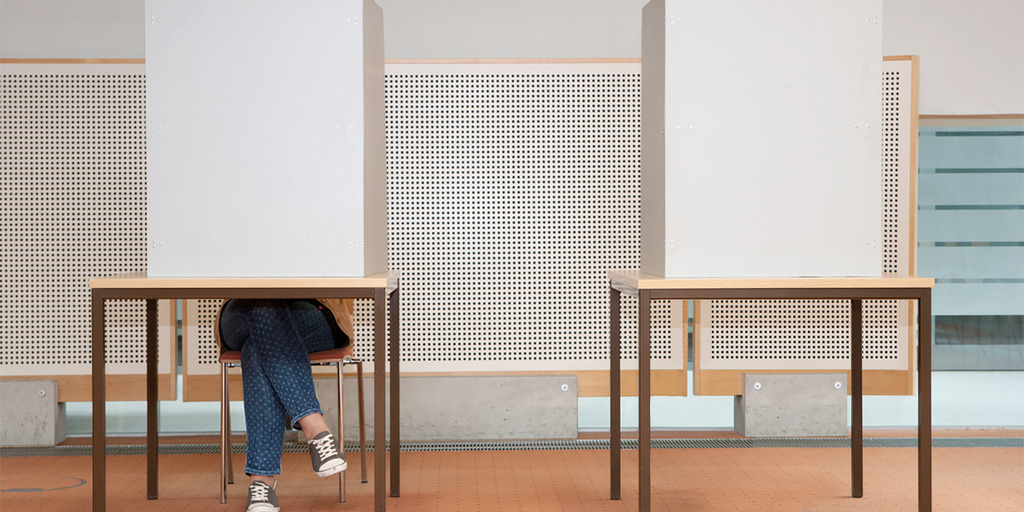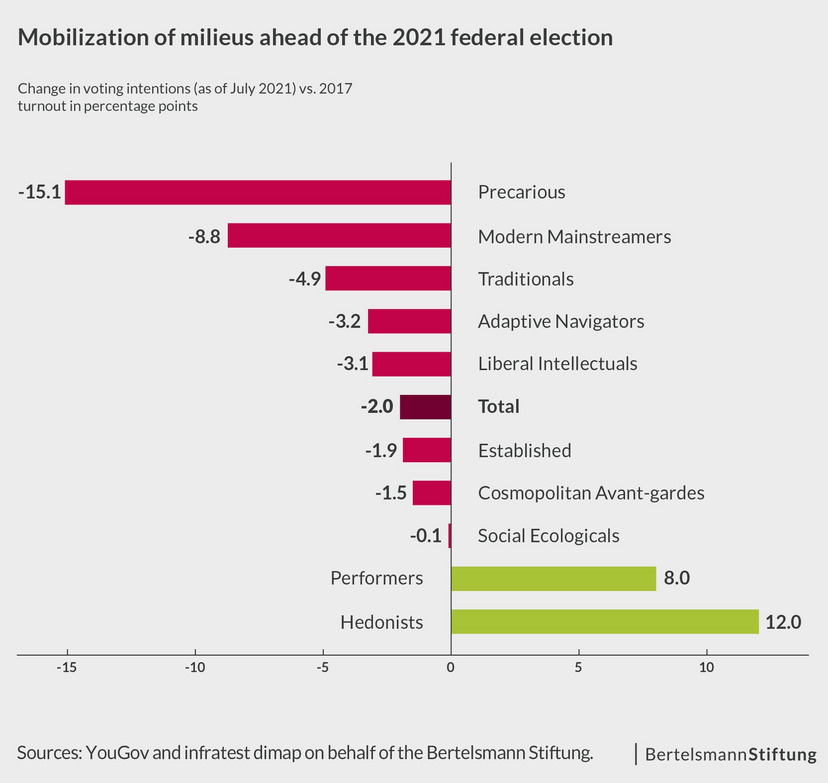In the 2017 federal election voter turnout in Germany was once again deeply divided along social lines. This is shown by our new estimates of voter turnout according to social milieu: Voter turnout was again almost 40 percentage points higher in parts of the social upper class than in socially disadvantaged milieus. The social lower classes are thus underrepresented in the election results by up to a third.
Nevertheless, the social divide in voter turnout did decline slightly in the 2017 federal election. However, this was not because the socially precarious non-voting milieus returned to the established parties from which they had increasingly distanced themselves since the 1980s. Their above-average increase in turnout was primarily due to targeted mobilization the AfD, whereas the established parties of the democratic center have very largely lost their anchoring and their capacity to mobilize people in socially precarious non-voter milieus.
Thus, the gap in turnout which narrowed slightly in 2017 could widen again in the 2021 federal election if the populist one-off effect fizzles out because disappointed protest voters from socially precarious milieus go back to refusing to vote. This is precisely what the current survey data suggest about the willingness of these milieus to vote. And due to the pandemic, other milieus are also somewhat weary of voting. This could condense into a “Corona Effect” that noticeably reduces voter turnout in the 2021 federal election and again deepens the social divide.





